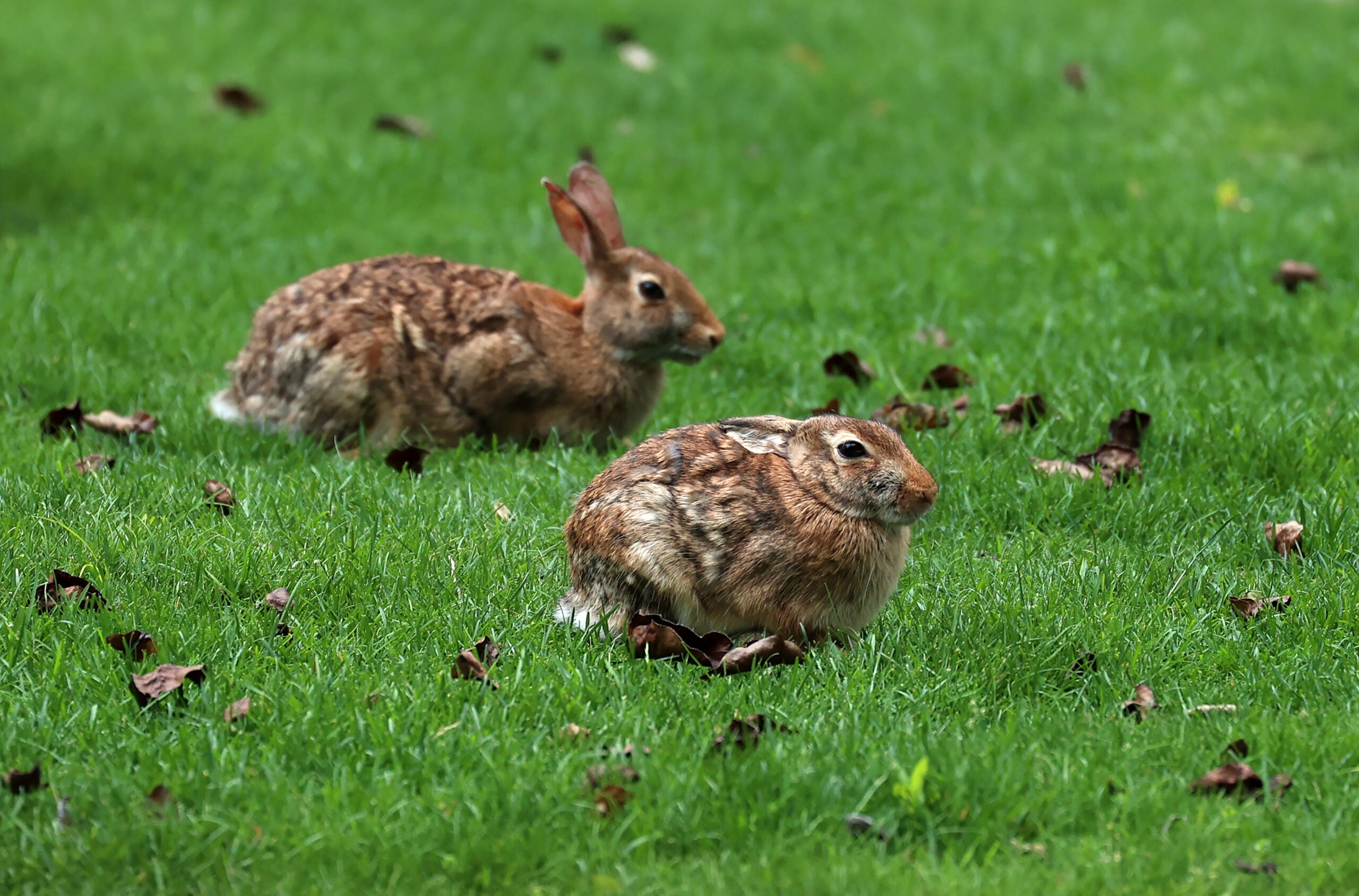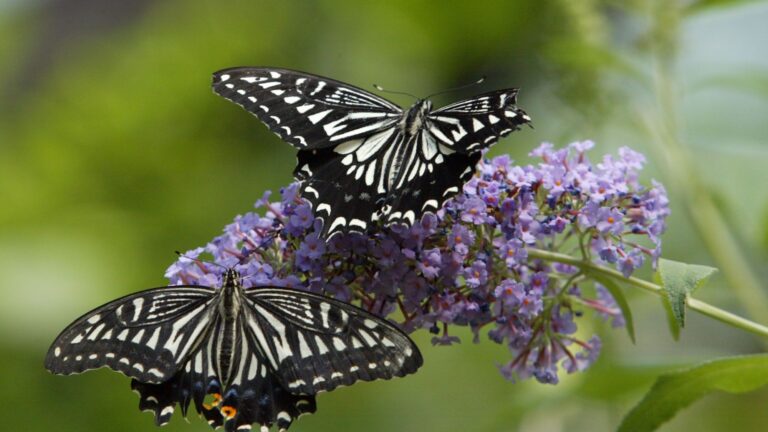Attention, gardeners: Rabbits are everywhere. And they’re ever-hungry.

Rabbits are running rampant in the Boston area this spring, as gardeners know all too well. They may look cuddly, but the long-eared interlopers can be serious troublemakers.
“They’re adorable,” said Jordan Takvorian, stewardship manager of the 56 community gardens across Boston owned by the Trustees of Reservations. “But they are kind of a menace.”
Takvorian said he has noticed more rabbits on the shared plots since the start of the pandemic, although some gardens have reported more than others.
He has also seen more rabbits, and telltale signs of their presence, in his own garden plot in Mattapan.
“I definitely have more bunnies nibbling on things,” Takvorian said. “I just put some chicken wire fence around it to try to exclude them.”
Rabbits are known for multiplying quickly and are seemingly everywhere in recent weeks, scurrying through backyards, parks, and patches of woods. Whether their numbers have grown is unclear, but their pesky behavior is certainly causing a stir.
“They don’t go into the street, but I wish they would because then they’d get run over,” said Back Bay resident Carolyn Vandam, whose friends had garden plants “wiped out” by rabbits this spring. “But we don’t have that much traffic where I live.”
“These rabbits — my goodness,” she said.
Barbara Malek, who has been visiting Boston from Philadelphia and stayed with friends in Dorchester, said her friends had recently planted flowers in their garden only to see them devoured by rabbits. Malek said she has seen rabbits all over the place and that they seem unusually comfortable living in close proximity to people.
“I haven’t noticed that in other cities,” she said.
Elnora Thompson, the coordinator of Nightingale Community Garden in Dorchester since the early 1980s, said she has discerned a marked increase in rabbits over the past two years, this spring especially.
And they have an appetite for the entire menu: from beans and lettuce to kale and cabbage. Even onions.
“A couple of weeks ago, I planted some onions and they came up. I was so proud that they came up because these [were] special onions that I ordered,” she said. “They just ate the tops right off of the onions, so that was a big setback for me — 25 onions.”

Thompson and her fellow gardeners are now planting extra seeds, anticipating the rabbits will take their share and then some.
“I planted some lettuce — instead of planting four or five, I planted eight,” Thompson said. “I figured if they ate three or four, I still have a couple left over.”
“You have to try to think like a bunny,” she added.
There are two species of wild rabbit in Massachusetts: the darker-colored, native New England Cottontail and the Eastern Cottontail, which was introduced to the region before the 20th century and has become the more prevalent type.
According to the Massachusetts Audubon Society, both species are able to live in rural, suburban, and urban environments and breed for much of the year, especially during warmer seasons.
Whether we are seeing a “bunny boom,” as many gardeners attest, is hard to know.
David Scarpitti, a wildlife biologist at the Massachusetts Division of Fisheries and Wildlife, said there isn’t “significant or concrete” data to suggest that there has been an overall jump in rabbit numbers in the area.
In any year, there are “considerable population fluctuations” corresponding to the cottontail mating season, which hits its height during the summer and falls off in the colder months, he said. Yearly variation in rabbit population peaks is mostly a product of predation rates, he said.
“If there’s a ton of squirrels because it was a really good acorn year, then a lot of the predators will maybe not take as many rabbits and pick a few more squirrels,” Scarpitti said. “There’s a little bit of switching prey choice that could influence those populations.”
Still, fluctuations in the food chain are hardly dramatic.
“In the grand scheme of things, the habitat is what it is,” Scarpitti said. “It probably hasn’t changed very significantly.”

Still, people say it sure seems as if there are more bunnies bouncing around, and their incursions have gotten bolder.
Thompson attributes the greater rabbit presence to development around Boston that may be reducing the amount of green space available to the cottontails for foraging.
In any case, it appears the rabbits at Nightingale Community Garden are enjoying a global diet as they enjoy Egyptian, Portuguese, and Vietnamese cuisine, courtesy of a multicultural group of growers.
“Everybody’s planting something different, so these bunnies [are] getting a wide variety of international food,” Thompson said.
And these gardeners, anyway, don’t seem to mind.
“Even though they’re eating our food, we’re happy,” Thompson said. “We’re still a bunch of happy gardeners.”







Conversation
This discussion has ended. Please join elsewhere on Boston.com